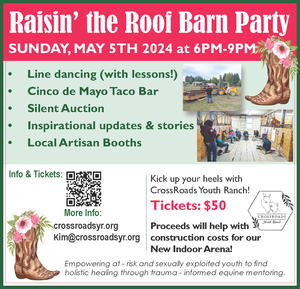Reflecting on this dry summer dust
A citizen’s view
October 4, 2023
I have been a part of our local farming community for sixty plus years now. I’ve seen more than half of the farm history in the region. I was able to observe the demise of peas, sweet corn and carrots. Now I’ve seen the arrival of dry beans, peppers, specialty grains and brussels sprouts. What new crop will we someday learn to grow, perhaps a new variety of quinoa or cauliflower? We could grow fish, but we’d rather grow cows and chickens.
When I was young I worked the land, planted and tended the peas until they brought the industry to its knees. I spent my youth studying what the source of the trouble might be, what is this fusarium fungus and why did it suddenly attack our peas? We already knew about a different species that was devastating to spinach grown for seed. Scientists studied new chemicals, bred resistance into the seed, but the peas just couldn’t succeed, so off they went to the Columbia basin.
We still grow spinach for seed, but it is not easy.
I started studying the soil all over the place, where did the peas grow best, what was the solution to the disease. Turns out it’s the organic matter in the soil that makes the show go good. It’ll go without the stuff, but it’s much more difficult to work and prepare, to plant and keep moist. Dust flying high in the sky is not a good sign. Most of our Skagit soils are terribly short of the valuable stuff. We could use a million tons of the carbon that yearly burns in our nearby forests. Without enough organic matter where we grow our food, our soil is probably short of the micronutrients that we need. Now we’re in a drought, which is worsened by this lack of organic matter. Most of our soils contain less than half the organic matter that they should: 1.5-2.5% is just not enough.
Most farmers believe in better living through chemistry, but I believe in smarter living through biology. Beneficial bacteria and fungi can help balance the mechanisms at work beneath our feet, we just must learn more than we used to.
We’re going to have to learn how to store more irrigation water down near the fields where the water will wet them. We need to see bigger than the past, we must see the future coming at us, covering us with dust. Meteorologists are telling us to prepare for a warmer winter, with less snowpack, aka our next year’s crops! We should strategically put small lakes in our lowest ground where we could grow new crops and still irrigate the land. We could grow as much protein in our irrigation water as the crops in soil without having to plow and pulverize our super fine silty clay.
We should take advantage of our current dry soils and dig some small lakes and ponds, widen and deepen more of our ditches and sloughs. There’s money available for this sort of undertaking. Let’s make it so.
Glen Johnson has farmed for decades in the Skagit Valley.












Reader Comments(0)